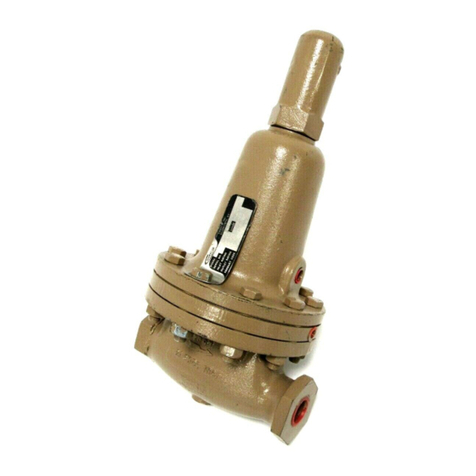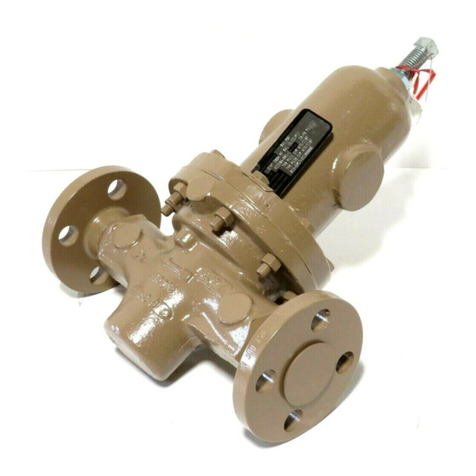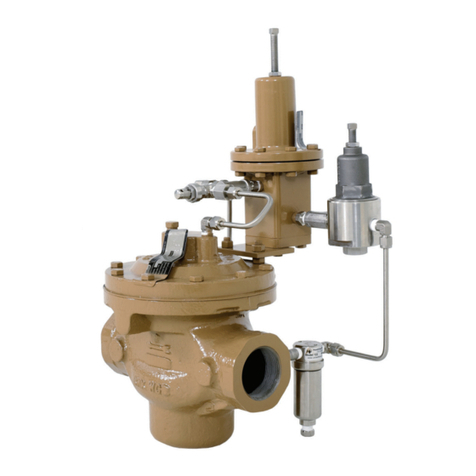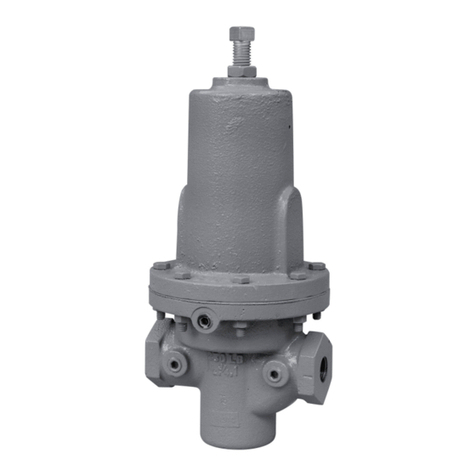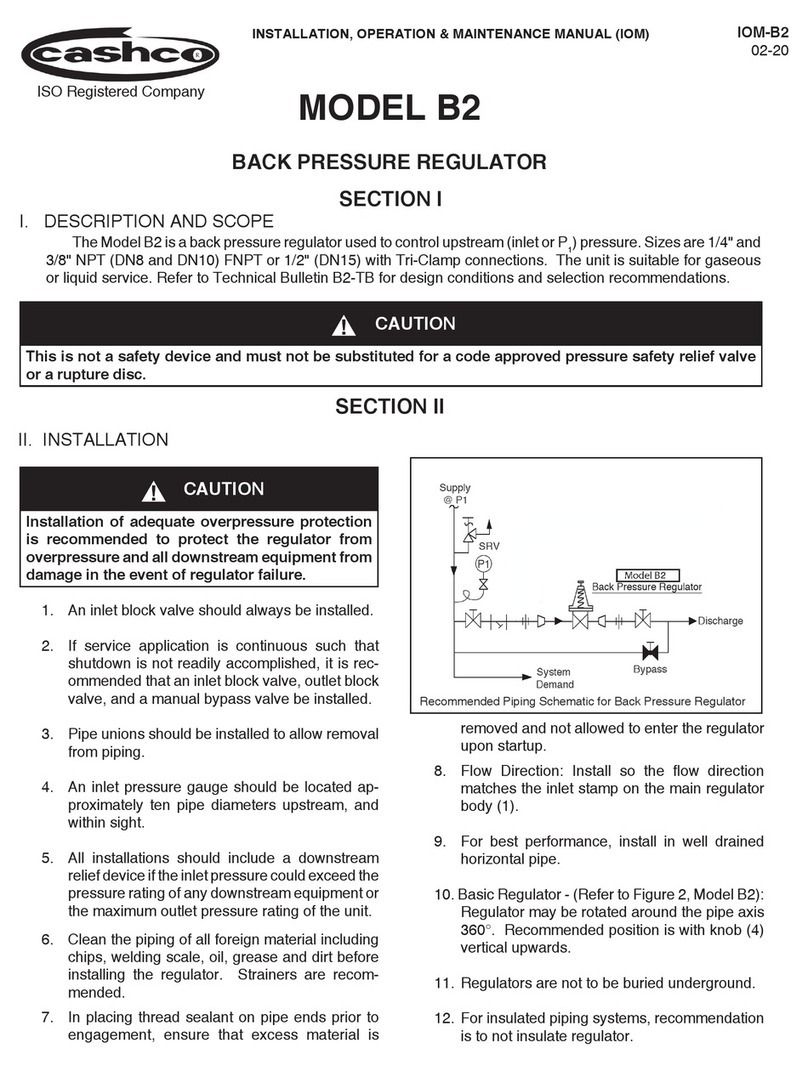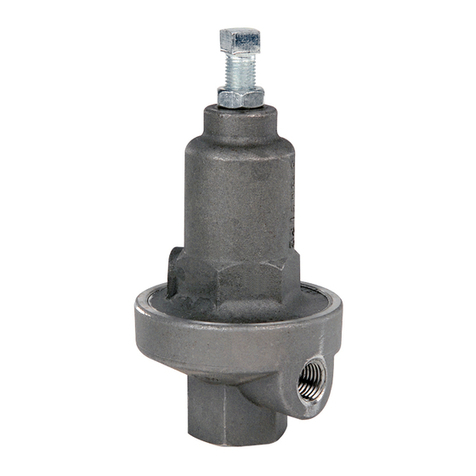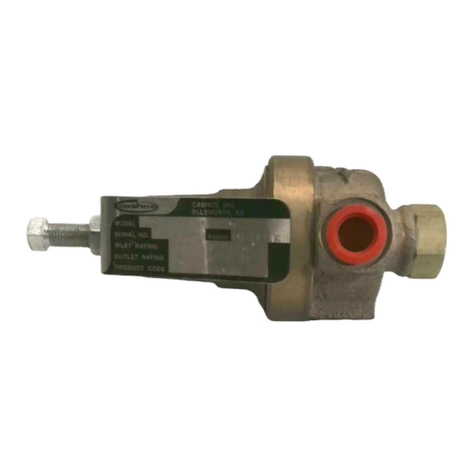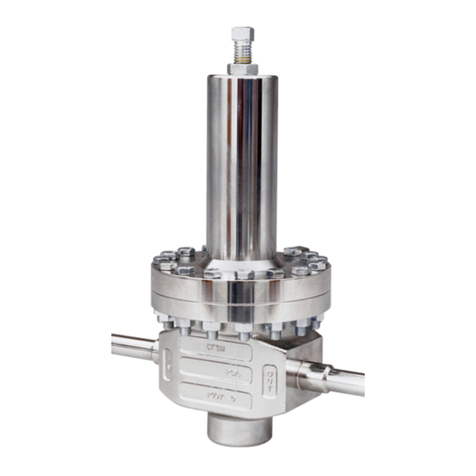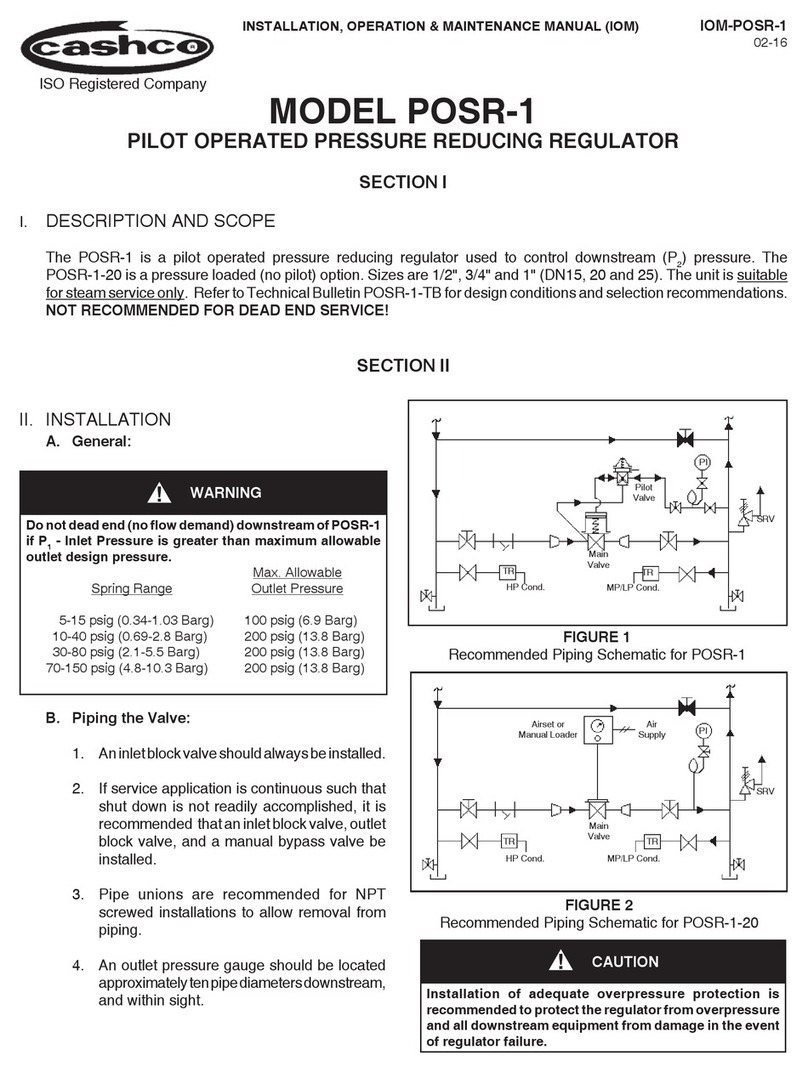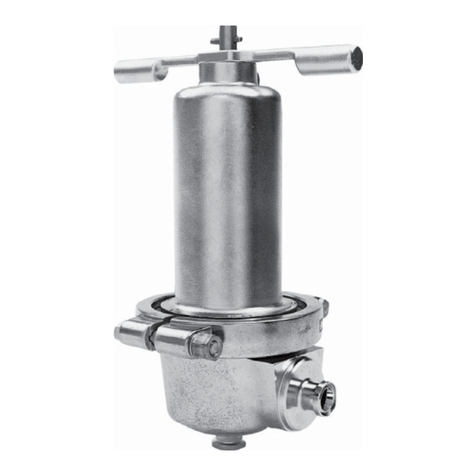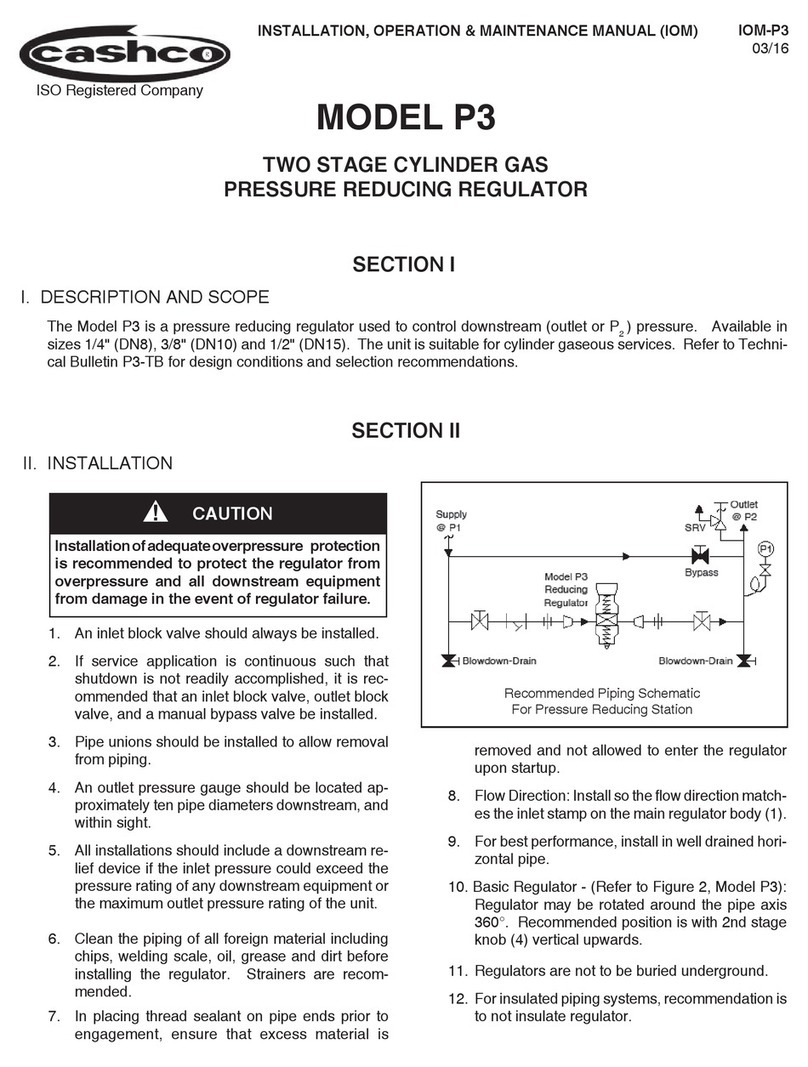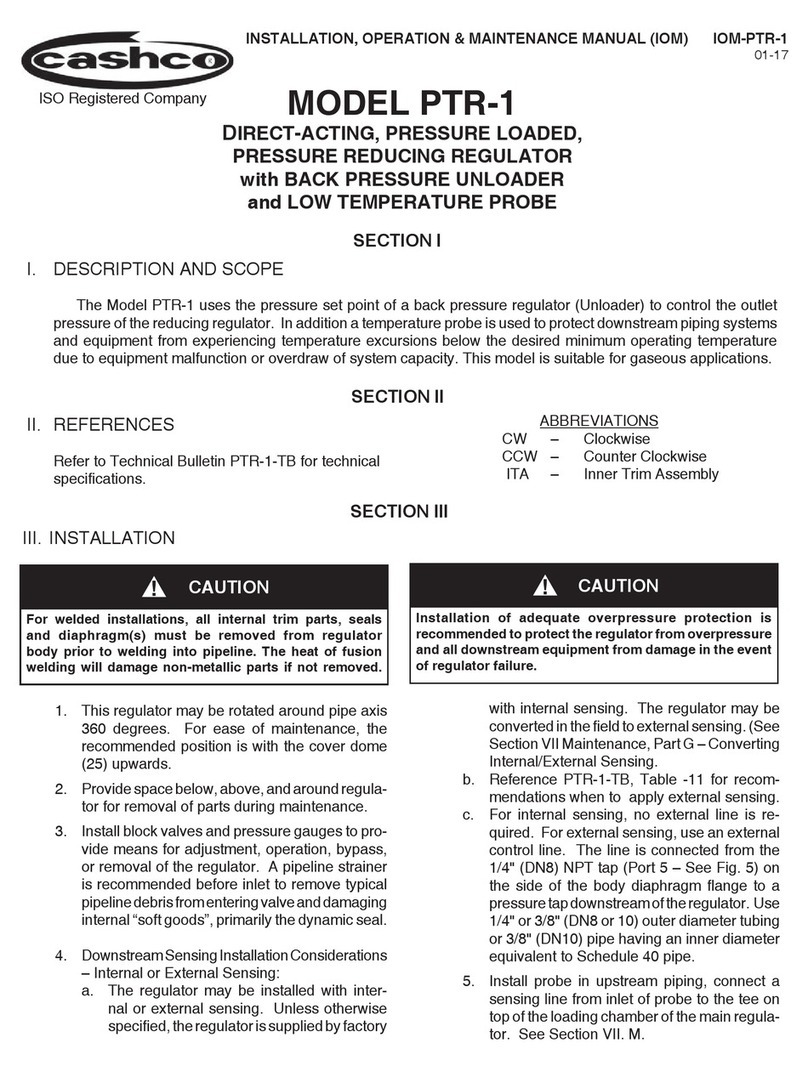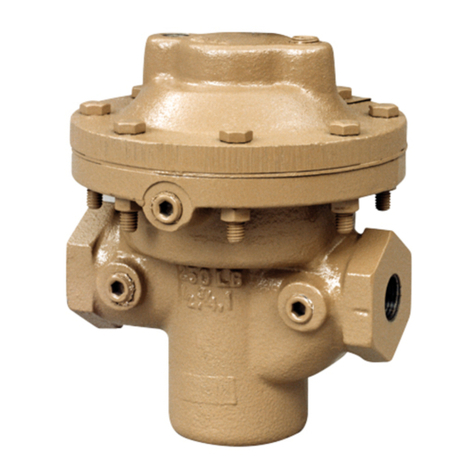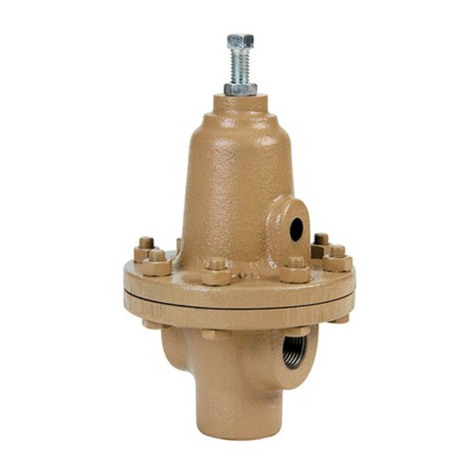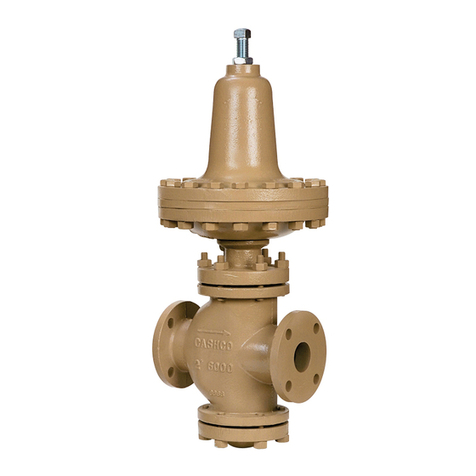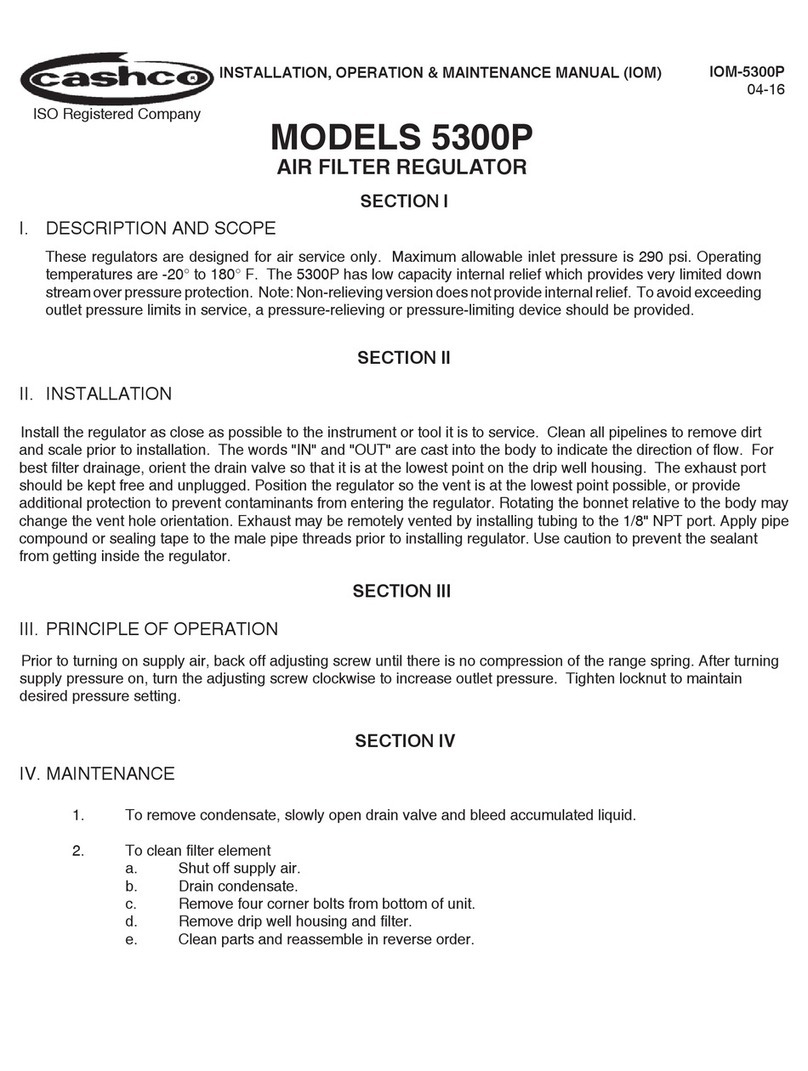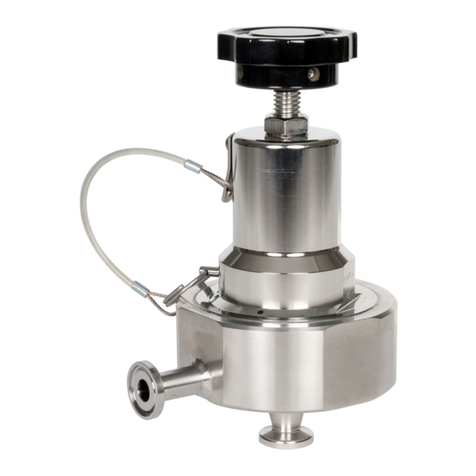
IOM-HP-S-DIFF
4
c. Lubricate adjusting screw (6) threads.
Carefully reinstall the adjusting screw (6)
up into the spring chamber (2) by rotating
the adjusting screw (6) CW until top of
adjusting screw (6) protrudes from top of
spring chamber (2). NOTE: Care should
be taken when holding and rotating the
adjusting screw (6) so the quad ring (31)
and backup ring (32) are not inadvertently
nicked or torn. Grasp top of adjusting
screw (6) and turn CCW until rotation
stops (see CAUTION C). See Figure 1.
d. Loosely install lock nut (7) and closing cap
(28).
7. Inspect pressure plate (3) for defects due to
over-pressurization. Replace if defective.
8. Clean all parts to be re-used according to
owner's procedures.
9. Place first o-ring (30) on body (1) and lubricate
with a lightweight multi-purpose grease.
Position body spacer (24) on body with match
marks aligned. Place pusher plate (11) on body
spacer (24) and check for vertical movement.
NOTE: The vertical movement should be free
and unobstructed as the pusher plate (11) is
pushed down and the lower piston spring (17)
contracts and expands. If movement is not
free, go to Subsection C following to inspect
the inner trim parts.
10. Place second o-ring (30) on body spacer (24)
and lubricate with lightweight multi-purpose
grease. Position diaphragm (12) on body
spacer (24) inside of o-ring (30).
11. Visually center the pressure plate (3) on
diaphragm (12). Place range spring (14) onto
retainer hub of pressure plate (3).
12. Place multi-purpose, high temperature grease
into depression of spring button (4) where
adjusting screw (6) bears. Set spring button (4)
onto range spring (14); ensure spring button
(4) is laying flat.
13. Using "NEW" studs (34,35) and nuts (9) (see
CAUTION D), thread a nut onto each stud
approximately 1.25" (32 mm). Drop the studs
(34,35) with nuts (9) through the holes in
spring chamber (2). (This will assist in keeping
the spring chamber (2) centered on body
(1) and prevent parts from moving during re-
assembly).
Using the "match marks" made in Step 3 as a
guide, replace spring chamber (2) onto body
spacer (24). Thread on lower nuts (9) and
tighten by hand. Adjust length of studs (34,35)
by using the top nut (9) so that there are at least
3 to 4 threads protruding from the lower nut.
Torque body flange hardware (9,23,34,35)
using small increments in a 180° alternating
pattern until flange mating surfaces of body
(1), body spacer (24) and spring chamber
(2) are metal to metal. This creates a "fixed
compression" on the diaphragm (12) and
o-ring (30) seals. Recommended torque
values are listed in Table 1.
TABLE 1
Body Size
in. (DN)
Item
No.
Thread
Size
Torque Values
Ft-lbs (N-m)
1/2"-1" (15-25) 9,23,34 3/8"-24 35-40 (47-54)
1-1/2" (40) 9,23,34,35 7/16"-20 55-60 (75-81)
14. With locknut (7) tight against closing cap
(28), turn closing cap (28) CW until tension is
applied to range spring (14).
15. Proceed to Section D. for bench test.
C. Trim Replacement:
NOTE: Do not release tension on range spring
(14). (Only necessary when removing spring
chamber). The range spring (14) tension
keeps pusher plate (11) in alignment and
assures proper fit upon replacement of trim.
1. Install body (1) in a vise with the body cap (5)
on top and spring chamber (2) downwards.
2. Loosen and remove body cap (5). NOTE:
Piston spring (17) may stick in body cap (5)
when removing.
3. Remove piston spring (17), piston (15) and
cylinder (16). Inspect parts for excessive
wear, especially at piston (15) seat surface.
Ensure there are no nicks or foreign particles
embedded in the piston (15) TFE seat.
Replace piston w/ TFE seat (15) if necessary.
Inspect the backup ring (27) and quad ring (26)
on piston (15). Replace rings if worn, nicked,
or depressed.
4. Remove body cap O-ring (25). Clean
contacting surfaces of body (1) and body cap
(5). Be careful not to scratch either surface.
Inspect inside surface of the body cap for
scratches or nicks. These could result in
leakage past the quad ring (26) and backup
ring (27). If worn or scratched replace body
cap (5).

